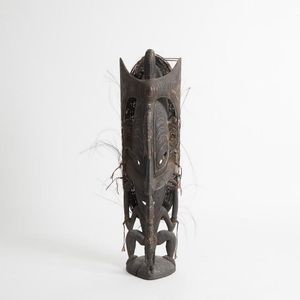
Sepik Ancestral Figure Mask with Elaborate Carvings
A middle Sepik River ancestral figure mask, Papua New Guinea, squatting figure raised on a curvilinear triangle, elbows resting on the thighs, elongated nose reaches the base, imposing headdress, body shaped as another ancestral figure, rattan structure…
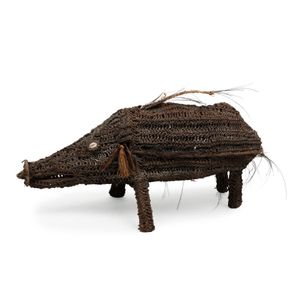
Sepik Wild Pig Woven Sculpture
A New Guinea, middle Sepik wild pig, woven sculpture with textiles, feathers, straw, shells and paint, 29 cm high, 65 cm wide, 34 cm deep
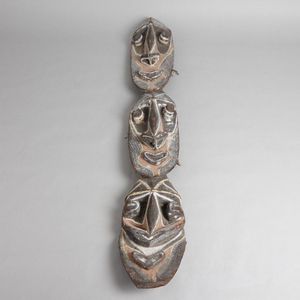
Sepik Triple-Visage Sculpture with Polka Dots
An impressive Sepik Triple-Visage sculpture. Long wooden sculpture carved into three ancestral visages on top of each other, with a high and domed forehead overlooking a flat face structured by a large nose pierced through the septum, bulging concentric…

Iatmul Ancestral Spirit Figure from Papua New Guinea
An Iatmul ancestral spirit figure, Sepik, Papua New Guinea. Female figure in slight squatting position, hands on the hips, with bulging abdomen, large face with cowrie inlaid eyes and crowned with feathers. Plaited fibres adorn the ears, nose, wrists,…
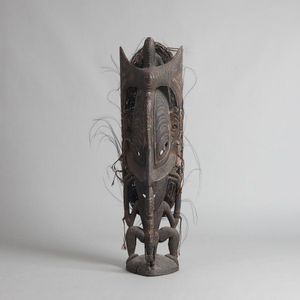
Sepik Ancestral Figure-Mask from Papua New Guinea
A middle Sepik River ancestral Figure-Mask, Papua New Guinea. Squatting figure raised on a curvilinear triangle, elbows resting on the thighs, elongated nose reaches the base, imposing headdress, body shaped as another ancestral figure, rattan structure…

Massim Pig Figures from Trobriand Islands, PNG
Fine pair of Massim pig figures, Trobriand Islands, Papua New Guinea. Pig sculptures have been made on Kiriwina Island to sell Western visitors as early as 1880. The use of pre-contact pig figures is uncertain; its function as an item of value used for…
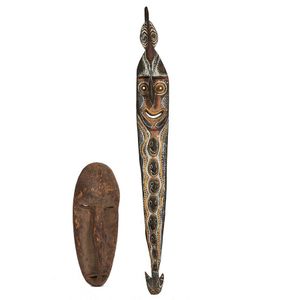
Abelam Sculpture and Ramu River Mask
Abelam carved and painted sculpture, East Sepik Province, Papua New Guinea, wood, with all over dot pattern around central face in natural earth pigments, together with a Ramu river mask (2), 176 cm. Provenance: The Estate of Ray Hughes
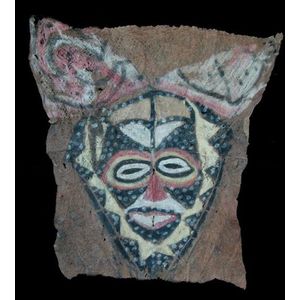
Nakanai Tapa Mask from William Rubin Collection
Tapa mask Nakanai people, New Britain. Provenance: Ex William Rubin collection (1927-2006). From 1968 to 1988, Rubin was a curator and director of the painting and sculpture department at the Museum of modern Art, located in New York city, New York . He…
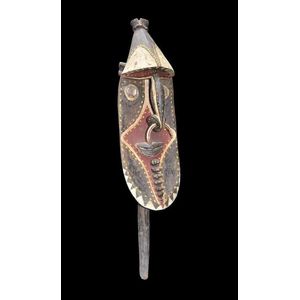
Expressive Yina Figure from Kwoma People, Upper Sepik
A Yina figure, Kwoma people, Waskuk area, upper Sepik, this very expressive Yina has all the attributes of good Kwoma sculpture, looking at the side view the nose is suspended from the forehead, much of the original ochre painted designs intact. Yina is…
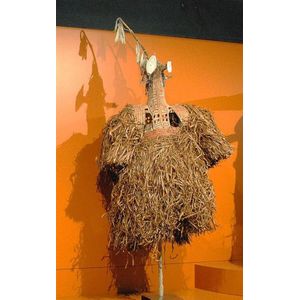
Asmat Jipae Dance Costume for Deceased Spirits Passing Over
An Asmat Jipae dance costume, Pupis village, Wasar River, NW Asmat area; Jipae costumes represent the recently deceased in the village, they represent both men and/or women and all have a personal name. The ceremony helps the spirits of the deceased pass…
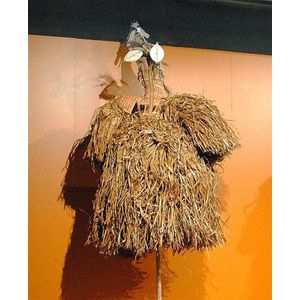
Asmat Jipae Dance Costume for Deceased Spirits
An Asmat Jipae dance costume, Pupis village, Wasar River, NW Asmat area; Jipae costumes represent the recently deceased in the village, they represent both men and/or women and all have a personal name. The ceremony helps the spirits of the deceased pass…
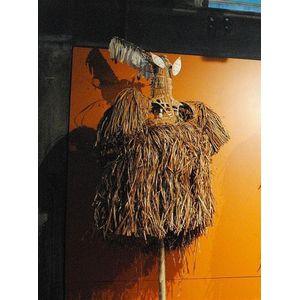
Asmat Jipae Dance Costume for Deceased Spirits
An Asmat Jipae dance costume, Pupis village, Wasar River, NW Asmat area; Jipae costumes represent the recently deceased in the village, they represent both men and/or women and all have a personal name. The ceremony helps the spirits of the deceased pass…
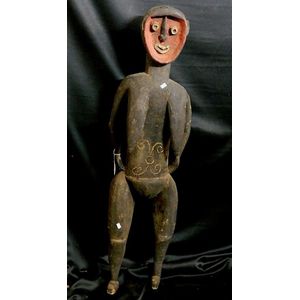
Nogwi: Female Ancestor Sculpture
An ancestor sculpture, Nogwi, Papua New Guinea in female form 113 cm
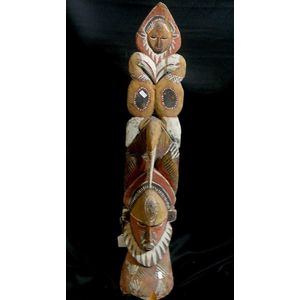
Abelam Ancestor Sculpture: Polychrome Pigments (95 cm)
An Abelam ancestor sculpture of wood polychrome pigments 95 cm
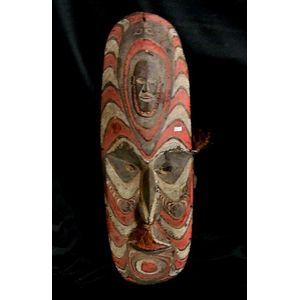
Sepik Ancestor Face Sculpture with Polychrome Pigments and Fibre Tassels
A Sepik ancestor sculpture in the form of an ancestor face, polychrome pigments, fibre tassels 82 cm
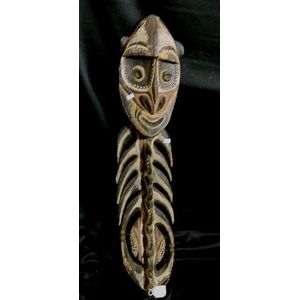
Sepik Ancestor Sculpture with Polychrome Pigments
A Sepik ancestor sculpture of wood, with open work base, polychrome pigments 84 cm
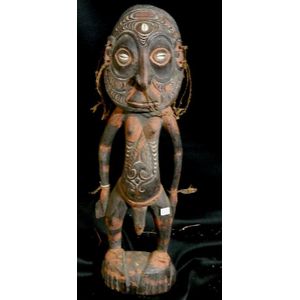
Sepik Male Ancestor Sculpture
A Sepik ancestor sculpture of wood, classic male form, polychrome pigment 54 cm
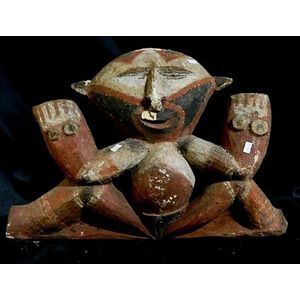
Abelam Ancestor Sculpture with Polychrome Pigments
An Abelam ancestor sculpture of wood with polychrome pigments 58 cm



 Loading more...
Loading more...